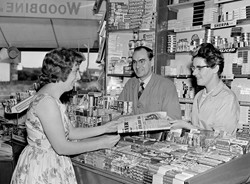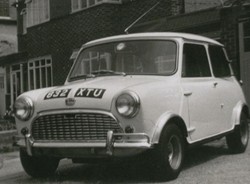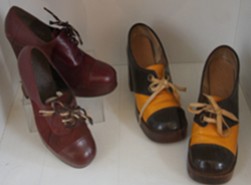Life in mid-century Britain

What was life like in Britain in the 50s, 60s, 70s and 80s? Since the end of the Second World War we went from rationing to mobile phones.
The 1950s
Well past the end of the Second World War many goods, including food, were still rationed. By the early 50s people were tired of the restrictions and wanted a return to normal peace time conditions, but this did not really happen until 1952.
A year before that the Festival of Britain showed people what modern living could be like, and in the years that followed, Britain enjoyed an economic boom. Everything, from cars to furniture, was available on credit, including televisions, which quickly became the pastime of the nation.
A distinctive brand of teenage music called Rock'n'Roll emerged, together with a new youth cult, the Teddy Boys, whose love of outrageous Edwardian-inspired fashion was matched by their taste for violence.
The 1960s

The good times continued into the sixties and a social revolution took place. Millions of teenagers took avantage of unheard of disposable income and bought records, clothes and even scooters or motorbikes.
Pop music was the teenagers' number one priority. Groups such as the Beatles and the Rolling Stones changed the music scene forever.
Teenage fashion changed in the 60s at an astonishing pace. Several youth cults came and went. The stylish Mods clashed with the Rockers, who loved motorbikes and leathers, but were a 50s' throw back. By the end of the decade, hippies wanted to drop out of conventional society altogether.
For most people though, life continued as it had in the 50s. Prosperity continued to rise in the 60s, and by the end of the decade nearly everyone had a television set and colour TV was also on its way.
The 1970s

In the 70s times were harder, inflation ran into double figures and a series of strikes resulted in the three-day week. Fashions became more outrageous. Flared trousers and platforms soles were popular with both sexes, as was long hair.
Many of the freedoms won in the 60s started to become more of a reality for ordinary people in the 70s. In spite of the economic difficulties, more people were enjoying eating out and going abroad for their holidays.
The 70s was also a much fairer time, with a much smaller gap between the richest and poorest in society.
The 1980s
In the 80s things changed again. Technology brought a whole new range of consumer goods to peoples' homes: microwave ovens, video recorders and home computers. In the 80s status mattered and a new social type emerged, the Yuppie or Young Upwardly Mobile Professional. Yuppies had highly paid jobs and wanted the best of everything. The ultimate 80s' status symbol was a brick sized mobile phone.
For most people the 80s was a time of rising prosperity. Many people were able to own the home they lived in for the first time. However, some were left behind and saw living standards fall.

